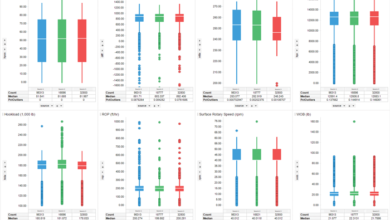By Eva Vigh, Editorial Coordinator

As a child of a Saudi Aramco helicopter maintenance engineer in the 1970s and ’80s, Trent Martin lived in more places while growing up than some people visit in a lifetime. From East Africa to Saudi Arabia and across Canada, the oil and gas industry quickly captured Mr Martin’s imagination as his father moved from one part of the industry to another.
“From a distance, I remember seeing the refinery when I was growing up in Ras Tanura,” Mr Martin said. “At an early age, I became intrigued.”
His interest in the industry, combined with his affinity for math, led to a natural gravitation toward engineering, he said. Mr Martin eventually joined the oilfield services industry after graduating from the University of Calgary in 1999 with a bachelor of science in geomatics engineering. Following an internship with the company the summer before graduation, Mr Martin started his career as a Field Engineer at Fugro, working on projects involving deepwater USBL/LBL positioning and hydrographic surveys.
It was in the mid-2000s that Mr Martin, then a Fugro Systems Engineer, visited the Sedco Energy offshore Nigeria. He had been on other offshore rigs, but this rig was unique in that its drill floor was offset from the center of the rig.
“Ahead of Transocean introducing dual-activity drilling, the Express-class rigs were designed for efficient well construction programs with a focus on offline activities, particularly pipe handling and tool makeup,” Mr Martin recalled. “Beyond the rig’s unique design, the people left a real impression on me. Most often, we would arrive on a rig, get our work done and depart. This time was different in that one of the drilling engineers took me around the rig, showed me the drill floor and the different aspects of the drilling operation and introduced me to those working on the rig.”
The experience was eye-opening and provided Mr Martin a more fulsome appreciation for offshore work and all of the engineering involved.
“Because of the personal touch, all of the elements came together for me during that assignment,” he said. “I was immediately hooked and couldn’t get enough, and still can’t to this day – more than a decade later. There is nothing more impressive than a drill rig in action offshore. The application of software to move these large pieces of machinery is profound and quite exciting.”
Mr Martin soon joined Transocean, where he initially served as the Lead Software and Systems Architect for a drilling instrumentation system that targeted conventional drill floors. The system consisted of both PLCs for data acquisition and industrial PCs running a human-machine interface.
“I think an exciting part of software engineering is you not only design it, but you’re also responsible to build that design,” he said. To do this, both a practical understanding of the offshore drilling process and the methods to measure and derive process variables by way of standard drilling calculations are necessary. Bringing together calculations, engineering and offshore rigs created a rewarding career path that evokes Mr Martin’s passions daily.
“If you asked my kids today, they would tell you how much dad loves math,” said Mr Martin, who now has five children, three still at home, and currently is Transocean’s Senior Manager of Technical Support Services. “One of the challenges that I most enjoy is the growth curve within offshore drilling. That has always kept me excited about this industry. At Transocean specifically, the drive, the tenacity and the competency energize me. Today, one of the advancements we are focusing on is data. There are going to be some exciting and novel ways that we use data going forward.”
Transocean recently began introducing performance dashboards that assist its employees with better utilizing data to improve drilling performance. A major part of the work involves pinpointing data to both optimize and standardize performance, Mr Martin said. The focus is on reducing, if not eliminating, the frequency and duration of any flat spots.
“It’s everything from the sensor accuracy to how it’s integrated into the system and, ultimately, finding simple, visual displays that aid in decision making,” he said.
This data-driven approach, which is being embraced across the industry, is exciting for Mr Martin, who says working on data solutions and quality improvements offers an opportunity for him to assist with further applying software engineering to optimize drilling.
“One of the exciting aspects of our industry is the ongoing improvement process,” Mr Martin said. “There is a culture of change management offshore, where we are seeing a continued improvement in how the industry manages software changes.”
This automation and data-driven drilling evolution will require the industry to share more information and knowledge, which is where the IADC Advanced Rig Technology (ART) Committee comes in. As Vice Chairman of the ART Committee, Mr Martin said he will be working to help IADC increase outreach efforts.
“There is a great amount of energy and a lot of people talking about data quality as the industry considers ways to improve, recognizing that it is going to require involvement of the entire value chain,” he said. “It truly is a great time to be an engineer in the offshore oil and gas sector. There is considerable opportunity for continuous technical advancement.” DC




